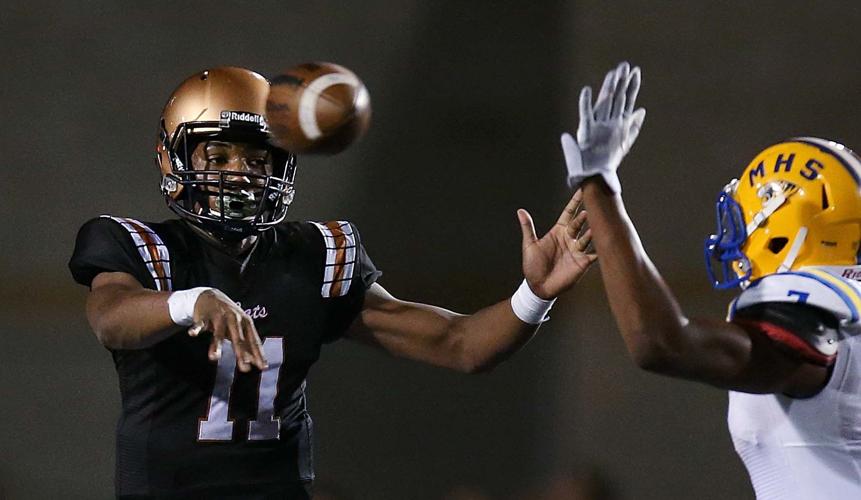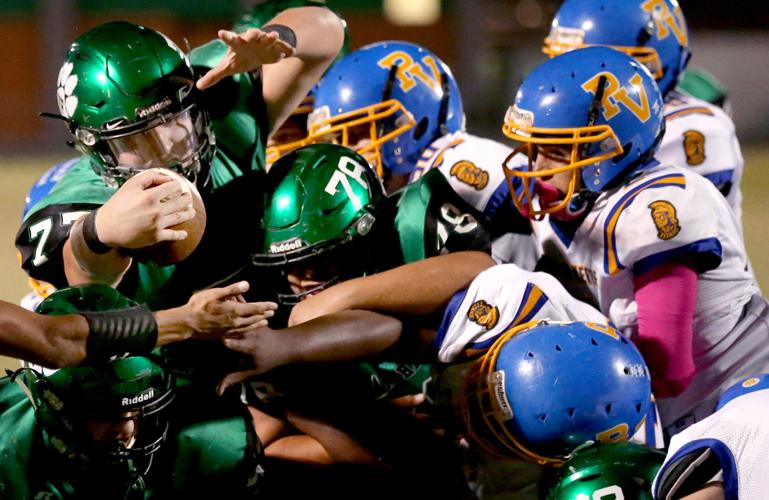Even the experts, who have been reporting on recruiting since before the current batch of recruits was born, aren’t sure what’s going to happen.
For the first time, college football will have a full-blown early signing period. It runs from Wednesday to Friday. It is a source of great curiosity among analysts, coaches, prospects and their families.
“I’m as fascinated as anybody,” said Greg Biggins, national recruiting analyst for 247Sports, “because it’s never been done.”
In spring, the College Commissioners Association approved the new 72-hour window for high school seniors to sign national letters of intent. It coincides with the start of the NLI period for junior-college transfers.
The reasoning behind the change is multifold, but there are two main objectives: (1) giving committed prospects a chance to end the recruiting process early and move on with their lives; and (2) reducing the number of 11th-hour “flips” that plague many Group of Five and mid-level Power Five schools, including Arizona.
UA coach Rich Rodriguez has been saying for weeks that he believes 70 percent of recruits will sign early. But he concedes that he could be wrong. Biggins’ best guess is 60 percent. Adam Gorney, national recruiting analyst for Rivals, estimates that “a good majority” will sign, but he couldn’t put a number on it.
Chris Singletary, Arizona’s director of recruiting, believes his boss is in the ballpark. But Singletary also allows: “It’s definitely an unknown.”
That’s an apt description for the entire process. Rodriguez and his staff have an idea of how it might play out. They think they know. But no one is certain.
Media outlets that regularly report on recruiting are preparing accordingly. ESPN will have 12 hours of live coverage on ESPNU, the SEC Network and the Longhorn Network. Five top-50 prospects are scheduled to make on-air announcements. Basically, it’s Signing Day Lite.
“Nobody is stopping any kid from having a big ceremony or party on Dec. 20,” Gorney said. “But nobody really knows how to handle it.”
The traditional early-February signing date still exists; the recruits who don’t sign by the 22nd and aren’t early enrollees can participate in school ceremonies and play hat games on Feb. 7.
Schools will have a good idea what their recruiting classes look like — what they have and still need — by then. In the meantime, they’re about to enter uncharted territory.
Arizona’s advantage
Rodriguez has stated multiple times that he favors no signing day at all. He contends that prospects should be able to sign whenever both parties agree they’re compatible.
But when the proposal for the early signing period passed, Rodriguez and his staff adjusted accordingly. They circled Dec. 20 on their calendars.
“We look at it as signing day,” Singletary said. “The guys that are committed to us, that have visited us, that told us that they’re coming … we expect that they will sign, come join and be a part of the program.”
Arizona expects 17 to 19 of its commits to sign Wednesday. The Wildcats had 20 total commits for 2018 as of Saturday.
Even if only 17 sign, that would exceed Rodriguez’s baseline. Two factors play into that.
The first is that the UA has a relatively settled coaching staff. Arizona has lost one assistant, offensive line coach Jim Michalczik. Rodriguez, meanwhile, has cooled all the hot-seat talk with a 7-5 record heading into the Dec. 27 Foster Farms Bowl.
Staff instability — changes are still happening daily — is one reason many oppose the early signing period. Most staffs are set by early February. Many are still in flux.
“Look at the ASU commits,” Gorney said. “Do they know who Herm Edwards is? They don’t have any time to research. It doesn’t really benefit anybody.”
As several people interviewed for this story noted, recruiting is about relationships above all else.
“You always want to play for a head coach or the position coach who brought you in,” Biggins said. “You don’t want to go in and not be that coach’s guy. He might not want you.”
The other factor is that Arizona doesn’t have any five-star recruits and isn’t in the running for any. Rivals recently elevated defensive end Adam Plant of Las Vegas to a four-star recruit. Everyone else has three stars.
Plant, who de-committed from Arizona in June and re-committed in November, isn’t expected to sign until February. Analysts believe many of those decisions will fall along those lines: The higher-rated players will wait and bask in the courting process, while the lower- and mid-tier prospects will sign now with schools that expressed interest in them from the outset.
As such, the schools that traditionally sit atop the recruiting rankings — and often swoop in for players very late in the process — probably will land smaller hauls during the early signing period.
“If you’re a four- or five-star, they’re not going to say you’re out” if you don’t sign, Biggins said. “But if you’re a two- or three-star, you’re committed to a school like Nevada and you don’t sign, they’re going to keep recruiting your position.”
Biggins and Gorney say that dynamic puts pressure on prospects who aren’t in that elite class. It isn’t quite at the ultimatum level, but the message is clear: Sign with us now or we’ll move on.
To wait or not to wait
Singletary insists that isn’t the case at Arizona. The conversation, he said, goes more like this: “You’ve committed to us. We’ve committed to you. Let’s go finalize this opportunity to become a football player here.”
Schools can’t be too pushy with certain players. As Gorney put it: “You want the kid to sign, but you don’t want to pressure him and turn him off.”
That’s especially true with quarterbacks, who aren’t easily replaceable. Most schools sign one quarterback per year, two at most. Arizona has one QB commit — Jamarye Joiner of Cienega.
Joiner does not plan to sign early. Even though he committed to Arizona in September 2016, Joiner is still considering Arizona State — although the coaching changes there could undermine the Sun Devils’ chances.
Joiner wants to wait until February so he and his family can enjoy the traditional signing-day pageantry.
“My mom wants to have a party, a get-together,” Joiner said. “It’s a new chapter in my life. Signing day is a big deal for us.”
Asked recently how he’d view a player who didn’t sign early, Rodriguez said: “He ain’t committed to us.” But there are exceptions to every rule, and Joiner said the UA coaching staff is on board with his decision.
“They’re fine with it,” Joiner said. “I talk to Rod Smith (the Wildcats’ QB coach) almost every day. He hasn’t pressured me to sign early. Me and him are on the same page.”
Schools are not allowed to talk about specific recruits until they officially sign. Speaking in general terms about players who want to wait, Singletary said: “You just take it as it comes. We’ll still recruit the young man. And we still have to address the needs of the program.”
Several UA commits have declared their intention to sign this upcoming week. They include offensive tackle David Watson of Amphitheater High School. Watson will enroll in January. As such, he isn’t required to sign in December. But he plans to anyway.
“It definitely shows some good faith to the university that I’m actually going to be there,” Watson said. “If I didn’t sign, it’d be two to three weeks of sitting around. Is he going to show up?”
For others, the waiting game will last that much longer.





